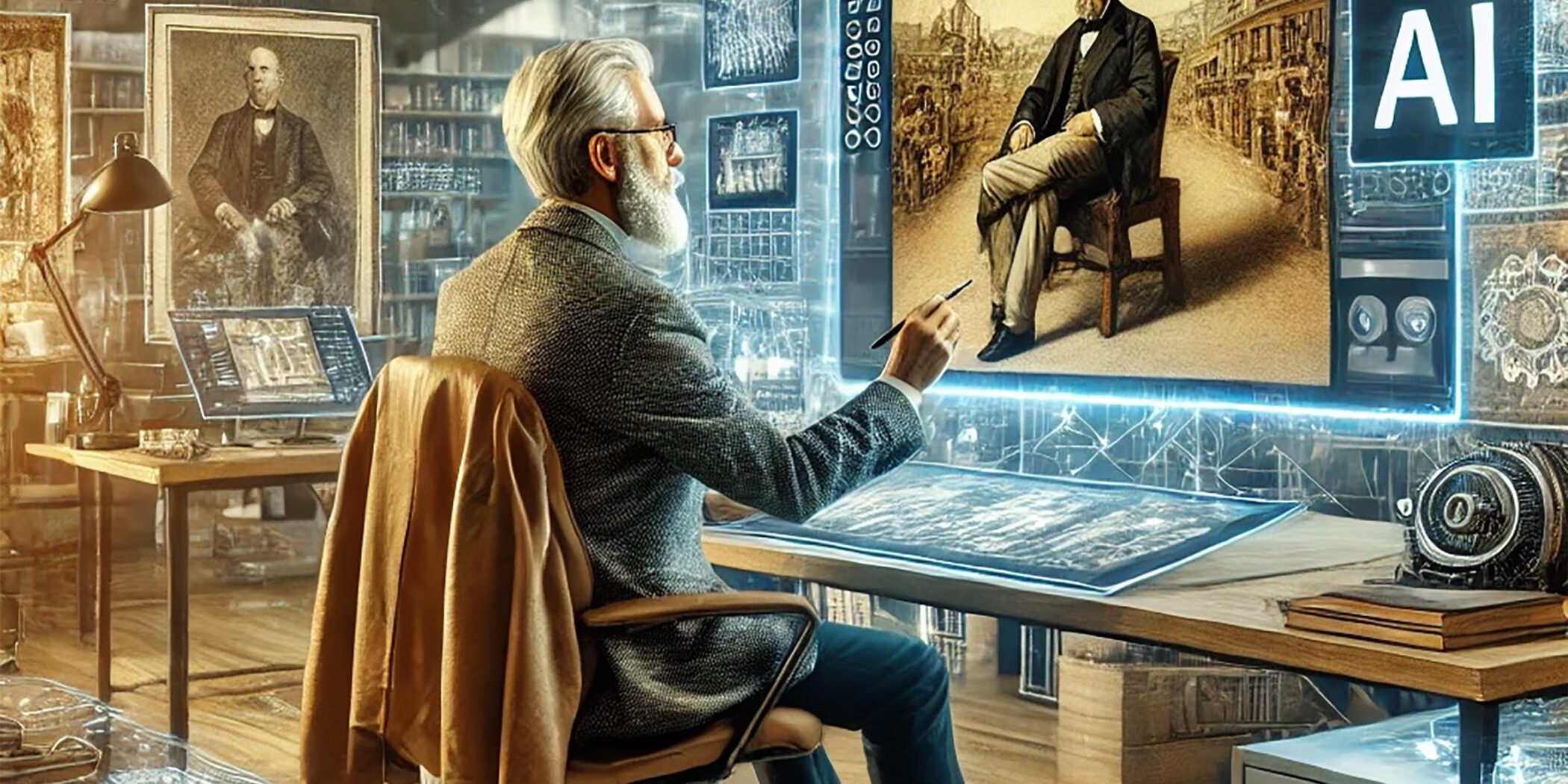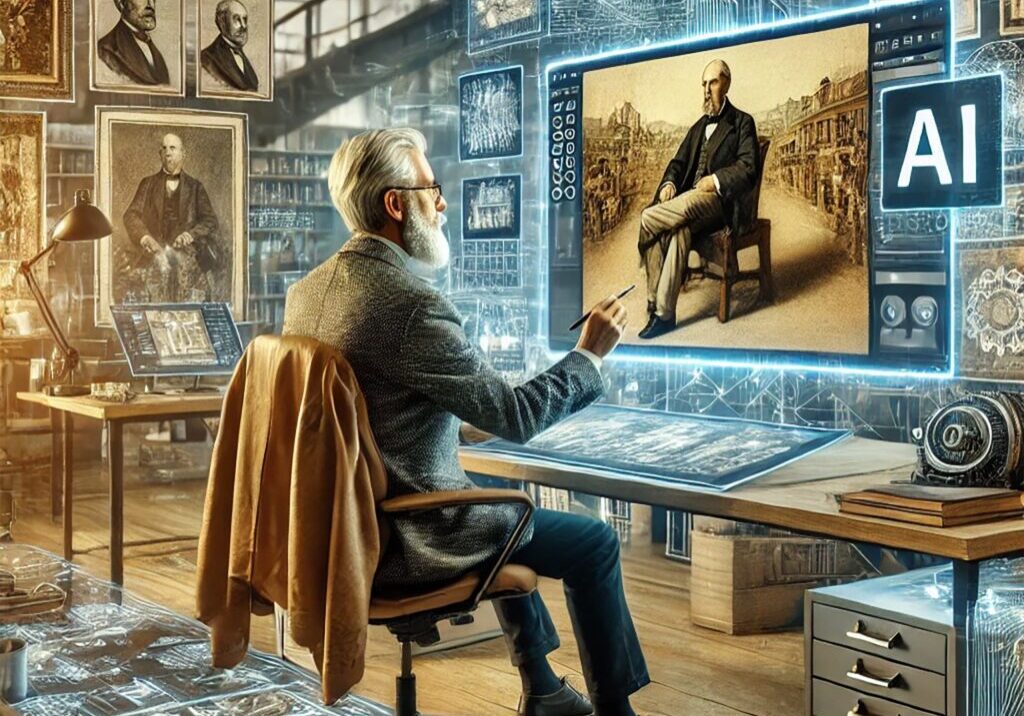
AI and Biotechnology: Imagining the Next Human Leap
Introduction
Progress doesn’t just move outward. Sometimes, it turns inward- into the mind, into the cell, into the code that now shapes both. The 250th Anniversary Mural reaches its final stretch of the Progress arc with a quiet shift in atmosphere. Gone are the smokestacks and steel mills, replaced by glowing circuits and diagnostic screens. In these panels, progress becomes more intimate. Less about what humans build- and more about what they might become. Artificial intelligence and biotechnology don’t arrive in the mural as declarations. They emerge as questions. Questions about possibility. About ethics. About what it means to be human when human ability begins to change. This blog explores how the mural renders these new domains- not with fear or fanfare, but with a steady hand and a cultural memory of how every leap comes with responsibility.
AI: More Than Machines That Think One panel shows a robot arm assisting in surgery. Another, a classroom where a virtual assistant helps students learn at different paces. Still another, a farmer checking crop predictions from an AI dashboard on a tablet. What’s missing in these scenes is equally important: there are no glowing eyes, no humanoid caricatures. The mural sidesteps sci-fi tropes and instead leans into function, purpose, and partnership. AI here is not portrayed as competition, but as extension- a mirror held up to human cognition. It offers pattern, prediction, and presence. But the mural places it in context: always beside a person, never above.
From natural language processing to medical diagnostics to climate modeling, the mural frames AI as a system of assistance, not replacement. But it also poses an open question: how do we guide a tool that learns from us- when we, too, are still learning? Biotechnology: Rewriting the Blueprint Across the arc of the mural, medicine evolves- from apothecaries to microscopes, penicillin to genome sequencing.
Biotechnology enters as both culmination and shift. One image shows a geneticist staring at a double helix rendered in light. Another shows stem cells dividing, overlayed with data. Another, a child with a prosthetic limb connected to a neural interface, sketching on a tablet. These aren’t scenes of superhuman fantasy. They’re quiet, precise, deeply human. The mural treats biotechnology not as magic, but as stewardship. The ability to alter genes, grow tissues, extend lives- these are framed with both wonder and gravity. Behind the imagery is a subtle reminder: just because we can doesn’t mean we always should. But when we do, we must carry the memory of every previous leap- what it offered, what it overlooked.
Ethics in the Frame One of the mural’s strengths lies in what it does not idealize. In the same section where AI assists, it also misguides. One frame shows a biased dataset generating unequal outcomes. Another shows a biotech breakthrough priced out of reach. The mural does not preach. But it does illuminate. Every tool carries its shadow. To that end, the mural includes scenes of dialogue- panels where people sit in deliberation: scientists, ethicists, citizens. The suggestion is clear. These advances cannot be shaped by expertise alone. They require shared authorship. Symbolism in the Scene Across the biotechnology and AI segments, three symbols repeat. The first: the spiral- of DNA, of circuitry, of thought. The spiral is growth and recursion. Innovation looping back to ethics. The second: the mirror. In labs, in code, in reflection. What we make will reflect what we value. The third: the hand- reaching, holding, building. Whether human or mechanical, it always meets another. A gesture of collaboration. A reminder of responsibility.
Why It Still Matters
AI and biotechnology are not abstract. They are present. Already embedded in health care, agriculture, transportation, even art. What matters now is not whether they arrive- but how. The mural asks: will these tools expand our humanity, or erode it? Will they be wielded with care- or only with speed? This is not just the next human leap. It is the leap that reflects who we have become, and what we choose to carry forward.
Reading / Explore More
As the mural prepares to transition from Progress to Unity, this final vignette reminds us: innovation is not the final chapter. It is the threshold. And what follows depends on how we integrate what we’ve made into who we are.
Related Blog: Green Energy and the Future of American Innovation Mural Link: https://usa250thanniversarymural.com Tags: 250 Mural, Biotechnology, Artificial Intelligence, American Innovation, Ethics in Tech, Human Enhancement, Genomics, Neural Interfaces, Future of Medicine, Progress and Responsibility

